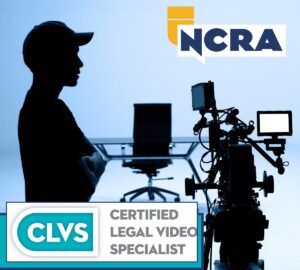
Weeks into the COVID-19 pandemic, the JCR Weekly checked in with several broadcast and CART captioners to get a snapshot of what has changed and what hasn’t in their work lives. Many already have working from home tackled; so you may find their advice on what equipment to have and the rules to keep your workflow moving useful if it’s new to you.
What are your must-haves in terms of equipment?
Darlene Rodella, RDR, CRR, CRC, Everett, Wash. | Solid internet connection and a mobile hotspot for backup, two computers/laptops updated and loaded with the appropriate platforms and connectors (i.e. Streamtext, 1CapApp, Zoom, Skype, Microsoft Teams, etc.), backup cables for the steno machine to the computer and/or WiFi dongles. Since I’m currently working from the U.K., I have a phone number through Skype that I can either call out on or be called on so no clients have to incur any long-distance charges. I also love my noise-cancelling headphones and comfortable chair!
Toni Christy, RPR, CRR, CRC, La Mesa, Calif. | I need a docking station for my laptop, a monitor (so I have two screens to utilize), a chair that adjusts several ways (mine has a split seat so I can pull my machine into me to write), and a Behringer amplifier.
Brook Nunn, RPR, CRC, Boise, Idaho | Backup equipment! Technology glitches happen frequently. We need to be ready to quickly transition to a different laptop that has our software, dictionaries, and streaming applications loaded. I also highly recommend using noise-cancelling headphones so you can clearly hear everything that’s said.
Adele Helmick-Moorehead, RPR, CRC, CRI, Jackson, Miss. | I have a lot on my list:
1. Two steno machines minimum (one main, one backup). My main is currently a Stenograph Wave. For remote CART, a student model machine is fine because you likely have a stable work environment in your home and are always writing realtime to a computer. You don’t need internal memory or recording capability in the machine itself, nor will you be watching your steno machine for translation. You have your computer for all those things. However, if you want wireless capability, you will need a more expensive professional model machine. For on-site CART, I would recommend a “professional model” machine, because you have less control over your environment for setup, and you really want the ability to be wireless.
2. Two computers and/or laptops minimum (one main, one backup). Consult your CART software company for their requirements as far as memory and speed, etc., and then get computers/laptops with even more than that. In fact, top of the line is recommended. There are always updates that come along, not just with your writing software, but Windows, etc., that will take up more and more memory space, and you will be running numerous programs at one time to provide CART remotely over the internet. So you need computers/laptops with enough memory and power to account for numerous programs running at once and all the updates that come along. I also recommend computers/laptops with numerous USB ports. I need the ports for my machine, mouse, and extended monitor and sometimes a thumb drive to transfer documents. I currently use two laptops (with three monitors between them) on every job. I have an additional laptop and computer nearby that I could turn on and use as backup if the other two that I always have on and ready fail. So backups for backups!
3. Two forms of reliable internet (one main and one backup). You get the point you want to have two separate systems of everything ready in case of emergency? This goes for internet, too! I have a wired-in plan for my whole home that includes my office. Plus, I have a wireless MiFi through a different provider as backup.
4. Battery backups/generator. Sometimes electricity goes out. You may not be able to go for days and days on battery backup or generator power, but you should at least be able to go for half a day or a day, enough time for – usually – power to come back on, to make arrangement to go somewhere else to work, or to refer out your work to another writer if necessary. You shouldn’t immediately be unable to work if your electricity goes out.
5. An awesome headset. I tried going frugal on these; it’s not worth it. Go big. I got a set of Bose over Christmas. Personally, I like a wired variety (because I don’t want to worry about pairing/unpairing Bluetooth every time I switch devices) that are an over-the-ear variety with a lot of padding. Noise-canceling ability (that you can turn on and off to your preference) recommended.
6. Comfy chair. Admission: I’m frugal. I look for bargains. I wasn’t keen on going out and spending hundreds of dollars on an office chair, especially when I’d sat in my fair share of such expensive chairs and found them none too comfortable for actually working long hours writing in. Like Goldilocks, they were too big, too small, too soft, too hard. I didn’t want to make a big money commitment and then find it wasn’t “just right.” But your chair is really important; so if you find one you know is comfortable and supportive even after long hours, buy it! But if you’re like me and can’t say for sure which chair is “just right,” then you can use a regular low-end office chair with wheels and add a thick gel seat cushion like (here’s one I like). This has worked well for me for almost a year.
Mary Kay Belcolore, RPR, CRR, CRC, Bolingbrook, Ill. | I mostly do CART captioning now; so, in addition to everything you use for on-site work, the most important thing is reliable, fast internet. This means being wired with ethernet cables – no WiFi. In addition to the laptop that I caption on through my Eclipse software, I have at least two, but prefer three, other laptops. I watch my Eclipse file to catch errors before they go out; then on another laptop I pull up the site where my captions are going to make sure they’re received; and on the other laptops I pull up any prep I receive from the client — PowerPoints, meeting agenda, etc. — and I often have another one to pull up things like Skype, Zoom, Adobe Connect, Elluminate, Webex, etc., whatever web platforms clients give us to use for audio and/or to imbed captions. This means I have a heavy-duty Netgear modem with four ethernet slots and two phone line slots, which brings us to the next important piece of equipment: a good phone and phone line, and I have a two-line corded speaker phone with an amplifier-with-headset connected which helps boost the sound. Also, I have my noise-canceling Plantronic headset to plug into my computers when I get audio from there instead of a regular phone line. I also have a second steno machine set up on one of the extra laptops, for backup. Oh, and most important too: a comfortable ergonomically correct chair with no arms! So nice to be able to get the right chair, not like what you have to suffer through sometimes on in-person jobs.
Do you have house rules?
DR | I wanted an On Air/Off Air light like they might have in TV studios. But I never got that.
My family knows to not enter the room if my headphones are on. They also know that I might be able to blurt out something to them, but that I can’t actually hear them when working. So asking questions will just have to wait. If it’s important, text me.
TC | I keep a white board in my office. If someone needs to communicate, they write it down and wait for an answer, no matter how long it takes!
BN | My husband knows that if my headphones are on, he can’t talk to me. Also, we have a one-year-old, so I make sure my office door is always shut, so he can’t run in and knock over any equipment.
AHM | I strongly recommend having your our own office space separate from your living area with its own door. There are four humans living in my house (myself, a spouse, and two teen children), plus three cats, and, until recently, a large dog (sadly Ace passed in January). Saying, “Don’t talk,” is not an option. That’s not fair to the other living beings! Plus inevitably someone will knock on your door, storms will roll by and be very loud, construction will be happening outside, etc. Do yourself a favor and find a space that can itself block out the noise as much as possible, regardless of what’s happening outside those office walls. I know not everyone has an extra room. I don’t have an extra room! I am literally working out of a converted walk-in closet. But you know what? It’s cozy, and I actually like it. It’s my space. When I’m in there, I’m in work mode. When I’m not, I’m not! Mentally, it’s also nice to have a separate space. I don’t have to worry about others – except my cats when they sneak in – disrupting my space. I do ask my family to not play loud music or yell, etc., while I’m working, and they respect that. If I’m in my office but do not mind being disturbed, I leave the door open. Otherwise, if the door is closed, they know not to bother me. Going back to the necessary equipment, a good quality pair of noise-cancelling headphones can do wonders, and that’s why they’re a must-have!
MKB | So these days I live by myself, so no trouble there except for when the yard service decides to mow the lawn right outside my window. LOL!
I will say though that transitioning to remote work requires discipline. I have house rules for myself: Get up at the same time every day even if you don’t have an assignment until 10 a.m. If you have time to prep, do it now. Try not to be distracted by the fact that you can clean the house or do laundry. And exercise, exercise, exercise. When you’re working on site, you usually get a fair amount of walking in, even muscle work lifting equipment. Working at home, it’s a lot of sitting, so you have got to keep moving. It’s good for the body and the mind and spirit. And always keep a protein bar, water, and cough drops nearby.
Has anything changed since COVID-19?
DR | For me, business has really slowed down during lockdown. I take a lot of on-site jobs which are nonexistent at the moment. And the remote jobs are being shared between a bigger pool of captioners.
TC | Traveling has always been part of my work. I was in the middle of a men’s basketball conference championship when COVID-19 hit. I scrambled to get home and have not left. All of that work is gone, for now. I have been able to acquire enough remote work to help fill in those gaps. I am blessed.
BN | Initially, there was a decrease in work while schools and businesses figured out how to transition online. However, at this point, it’s mostly business as usual except everyone else is working from home too. One surprising upside to classes being held entirely online is I can easily hear all of the students! I can’t remember the last time I wrote “(Away from Microphone).”
AHM | At first I lost work. Some university classes I was covering converted to asynchronous (so no live class) online so they no longer needed CART services. Some events and conferences I was scheduled to caption canceled. But then I picked up different work that I never would have if not for COVID-19 measures. For instance, one university I had not been working for previously moved from in-person classes to live, online classes and needed more assistance with remote CART captioning; so I picked up some work there. As businesses moved their workforce to work-from-home more meetings were being held virtually, and they needed CART captioning. All in all, at this point I’d say it’s evened out.
MKB | At first, there were many cancellations and business was down for a while, but since then it has picked up, as many companies have transitioned their employees to working from home and are having remote meetings where they used to meet in person. And they need captioners!
Is there anything you are anticipating for two to five months from now?
DR | I do anticipate that the work really will begin to pick up significantly. I sense that companies are coming through the initial phase of getting employees set up and secure to work from home, and there will be a greater need for remote captioning.
TC | I am anticipating much of the same [as we have experienced the past few weeks]. I think we all have different levels of comfort, given the virus onset. Now we have to figure out what that means for each of us. Fall is the earliest I see things potentially moving forward with regard to travel and/or groups attempting to gather, but I am not sure how I feel about that yet. I am going to let the science lead me with regard to those decisions.
BN | I think many people are becoming comfortable working remotely and videoconferencing and will choose to have more virtual meetings in the future.
AHM | Summer, in my experience, has always been a slower time for CART as there is not as much classroom work due to school schedules, and many businesspeople have fewer events due to vacations and holidays. So I expect the next two months to be slower, but not because of COVID-19, but just because that is the normal cycle of things.
Within five months I expect things to ramp up significantly as stay-at-home orders are lifted, fall semesters (whether in-person or virtually) begin, and businesses get “back to normal,” whatever that might look like, including planning for in-person or virtual events. I’m anticipating I will be as busy as I want to be! The need for CART captioning has not diminished. If anything, there is even more awareness and value placed on quality CART at this time.
MKB | I’m not sure what to expect. Usually there’s a bit of a summer slowdown and then a pickup in the fall when schools start again. Everything is upside down; so I don’t know. I do think, though, that clients who have completely disappeared for a while will be starting to return, and on top of the new business with new clients, it will make things crazy busy around September. And I think some clients will continue with remote meetings even after everything opens up again since they’re discovering they can keep the business going with everyone working from home when they didn’t really think they could.
What are your biggest concerns right now?
DR | I’m not terribly concerned, but I am eager for a return to some normalcy.
TC |With regard to work, summer is always more of a quiet time. Schools of all levels are recessed, and, for me, sporting events and conferences will not be happening; so I know this will be more subdued than usual. I feel very blessed to be working, period. I count my blessings every day.
AHM | As has been the case since the 1990s when I originally went to court reporting school, there is a looming threat of technology-based competition. Back in the 1990s, it was the threat of the tape recorder! As students, we wondered if we’d have jobs in the future. Twenty years later and the job market for court reporters, as far as I can tell, is as strong as ever. The threat did not live up to the hype.
Now in the accessibility field of CART, there is the threat of automated speech-to-text technologies. There’s been a lot of improvement in this field, and I know a lot of money and effort is being funneled into this endeavor. There’s also a lot of hype, but to this point, once again, it’s not lived up to the hype. A quality CART provider is still better than any automated system by far, and no automated system can provide true accessibility in almost every circumstance, in my experience and opinion. Will this always be true? I’m not sure. If not, how long will this be the case? Again, I don’t know. Will it even matter “which is better” or truly provides accessibility, or will businesses/organizations/schools just use cheaper automated options without ramifications via legislation or losing lawsuits? Again, I don’t know, but I believe it may be this piece that is most important of all.
I am 43 years old right now. I hope to have CART captioning as my career for another 20 years. I can’t imagine myself doing something else! And I do believe I will be able to finish my career out in this field. But the conversations have started in the back of my mind, if I had to do something else, what would it be? Maybe I should start planning for those things, not because I think it will for sure happen, but because it’s good to have backups. Just like with our equipment needs, emergencies happen, unexpected things happen, and we need to be prepared, nimble, and flexible.
MKB | If you mean business wise, just hoping to stay busy! My two biggest concerns with working remotely is internet stability and good audio. I have no control over my internet provider, and the occasional outage creates havoc. And I never feel as though the audio quality working remotely is as good as being in person. It just isn’t. Now even more so, because everyone is calling in remotely and the background noises — the kids screaming and the dogs barking and pots clanging because people are calling from their kitchen, and so on — makes our job more difficult.
Personally, like everyone, I guess hoping family and friends stay well, physically and mentally. And for me, since I live alone and work alone, I really miss being able to get out in my free time and be with people! I love music, so that helps. And so do all the Zoom happy hours with friends and family!
Do you have any advice for captioners right now?
DR | Keep your sense of humor and stay in touch with colleagues from time to time. We aren’t together, but we are all in this together. Our clients and consumers still need us, maybe even more than ever!
TC | This is a difficult time, full stop. We are all trying to find our way in our lives, in our relationships, in our careers. Being versatile and flexible in our work is vital. Now is the time to hone your craft and build more skills. If there is a software program you need to get up to speed on, a piece of equipment you have been meaning to procure, a more efficient way to write something that you have been wanting to focus on, this is that time.
BN | Continually improve your skill. ASR has improved; so we need to improve as well. Clients have high expectations, and it’s our job to meet those expectations. Build your dictionaries, work toward additional certifications, and familiarize yourself with advanced software capabilities. Also, learn how to integrate your captions into online platforms such as Zoom, Adobe Connect, Blackboard Collaborate, and YouTube.
AHM | Do everything you can to be the best you can be at what you do. Network as much as you can, which, especially remotely, can be hard. Especially as one who is naturally introverted as I am, it can be doubly especially hard! But if one door closes, networking is the best place to find a new one open. Lastly, live in gratefulness. You have an awesome job, doing awesome and important work! I feel so blessed to get the opportunity to be my own boss, working from home, making a decent enough wage to support my family, and I hope you have the same experience. I don’t know what tomorrow will bring, but I know right here and now it’s a wonderful life.
MKB | I remember feeling overwhelmed when I started working remotely. It seems the technology of it all can be daunting. It still is, actually. But then I was born BC, before computers. (I’ll be 65 next month.) For younger captioners, that part of it might be a piece of cake. But you’re already a captioner; so you’ve conquered the hard part! Working remotely gives you a great opportunity to be of service, just using a different methodology. You have a great skill, you are needed, and it is just as rewarding as working in person, even more so now in this COVID-19 world. I used to tell myself that the only person stopping me was me. So jump right in. The water’s fine! If I can do it; so can you!







